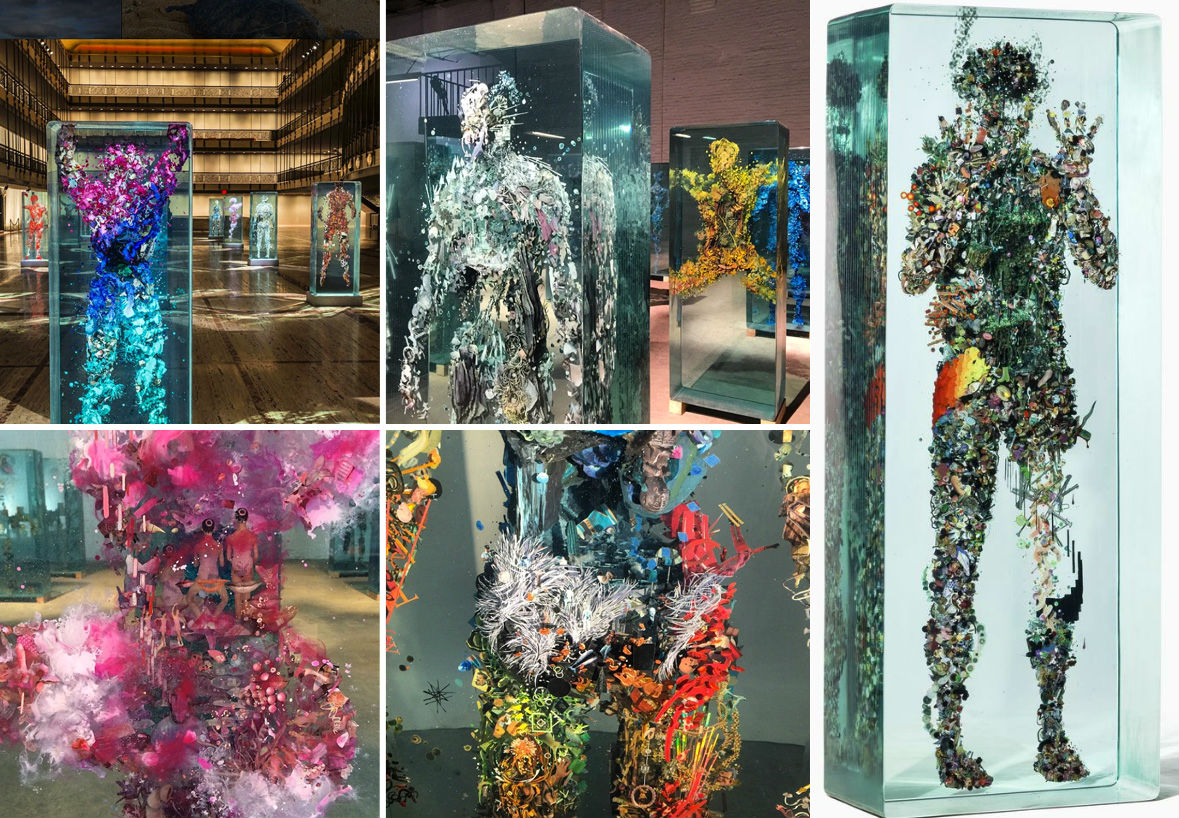
 Most of us, probably all of us, at least once in a lifetime picked up some tiny things that caught our eyes, as we walked by. Beautiful leaves and seashells, lovely bits of paper or sea glass, pebbles, all of them are pieces of the environments that we pass through and want to remember. Such a pastime can serve as the basis of an artistic practice that is called psychogeography.
Most of us, probably all of us, at least once in a lifetime picked up some tiny things that caught our eyes, as we walked by. Beautiful leaves and seashells, lovely bits of paper or sea glass, pebbles, all of them are pieces of the environments that we pass through and want to remember. Such a pastime can serve as the basis of an artistic practice that is called psychogeography.

 Dustin Yellin is a Brooklyn-based artist that took this method to a whole new level. He turns everything that he finds on the street – flowers, bugs, leaves, herbs, even dead rats – with a mix of magazine clippings and acrylic paint into collages, encased by several layers of translucent glass sheets. When the layers are put together, they form life-sized, three-dimensional human being silhouettes that evoke the ancient terracotta warriors of the Qin dynasty, as well as Damien Hirst’s formaldehyde installations or even prehistoric insects, trapped in the amber.
Dustin Yellin is a Brooklyn-based artist that took this method to a whole new level. He turns everything that he finds on the street – flowers, bugs, leaves, herbs, even dead rats – with a mix of magazine clippings and acrylic paint into collages, encased by several layers of translucent glass sheets. When the layers are put together, they form life-sized, three-dimensional human being silhouettes that evoke the ancient terracotta warriors of the Qin dynasty, as well as Damien Hirst’s formaldehyde installations or even prehistoric insects, trapped in the amber.

 Yellin calls his intricately crafted artworks “sculptural paintings”. They look like random gatherings of bits and scraps, when viewed carefully, but when regarded from afar, they turn into eerie anthropological forms, exhibited in a natural history museum.
Yellin calls his intricately crafted artworks “sculptural paintings”. They look like random gatherings of bits and scraps, when viewed carefully, but when regarded from afar, they turn into eerie anthropological forms, exhibited in a natural history museum.
 These massive, yet ephemeral images look like exploding souls of the human culture that collided with the nature. They represent our collective unconsciousness in the form of deteriorating humanoid figures. This decomposition, as well as a dialectic conflict between artifice and the natural world, both terrify and amaze the viewers.
These massive, yet ephemeral images look like exploding souls of the human culture that collided with the nature. They represent our collective unconsciousness in the form of deteriorating humanoid figures. This decomposition, as well as a dialectic conflict between artifice and the natural world, both terrify and amaze the viewers.
 Dustin Yellin managed to create meticulous objects that are visually stunning and have a thought-provoking, intriguing nature. In 2015, he also teamed up with the New York City Ballet to produce 15 new pieces of the Psychogeographer’s project that mimic the natural movements of ballet dancers, blending the two artistic practices.
Dustin Yellin managed to create meticulous objects that are visually stunning and have a thought-provoking, intriguing nature. In 2015, he also teamed up with the New York City Ballet to produce 15 new pieces of the Psychogeographer’s project that mimic the natural movements of ballet dancers, blending the two artistic practices.
